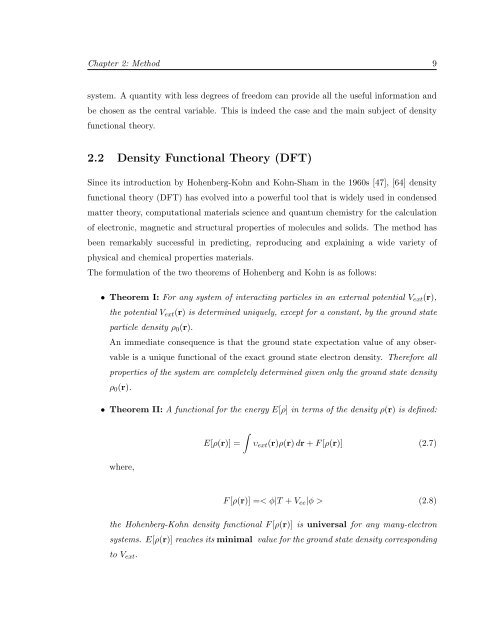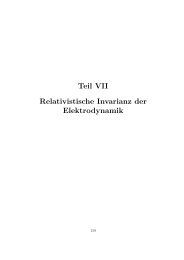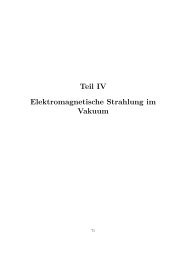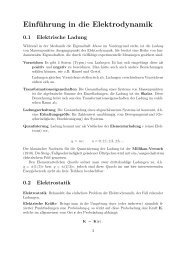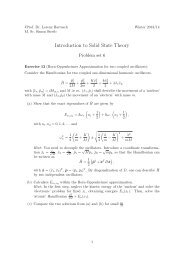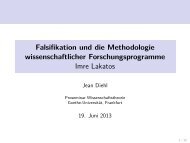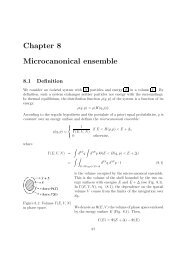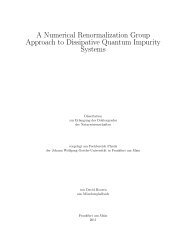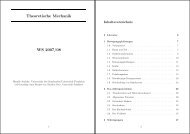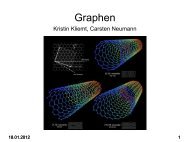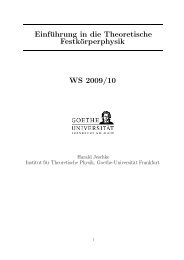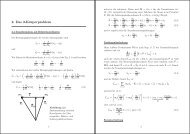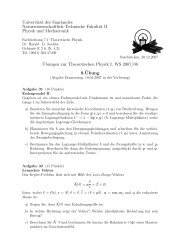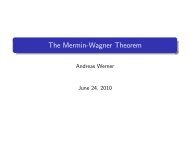Microscopic Modelling of Correlated Low-dimensional Systems
Microscopic Modelling of Correlated Low-dimensional Systems
Microscopic Modelling of Correlated Low-dimensional Systems
You also want an ePaper? Increase the reach of your titles
YUMPU automatically turns print PDFs into web optimized ePapers that Google loves.
Chapter 2: Method 9<br />
system. A quantity with less degrees <strong>of</strong> freedom can provide all the useful information and<br />
be chosen as the central variable. This is indeed the case and the main subject <strong>of</strong> density<br />
functional theory.<br />
2.2 Density Functional Theory (DFT)<br />
Since its introduction by Hohenberg-Kohn and Kohn-Sham in the 1960s [47], [64] density<br />
functional theory (DFT) has evolved into a powerful tool that is widely used in condensed<br />
matter theory, computational materials science and quantum chemistry for the calculation<br />
<strong>of</strong> electronic, magnetic and structural properties <strong>of</strong> molecules and solids. The method has<br />
been remarkably successful in predicting, reproducing and explaining a wide variety <strong>of</strong><br />
physical and chemical properties materials.<br />
The formulation <strong>of</strong> the two theorems <strong>of</strong> Hohenberg and Kohn is as follows:<br />
• Theorem I: For any system <strong>of</strong> interacting particles in an external potential Vext(r),<br />
the potential Vext(r) is determined uniquely, except for a constant, by the ground state<br />
particle density ρ0(r).<br />
An immediate consequence is that the ground state expectation value <strong>of</strong> any obser-<br />
vable is a unique functional <strong>of</strong> the exact ground state electron density. Therefore all<br />
properties <strong>of</strong> the system are completely determined given only the ground state density<br />
ρ0(r).<br />
• Theorem II: A functional for the energy E[ρ] in terms <strong>of</strong> the density ρ(r) is defined:<br />
where,<br />
�<br />
E[ρ(r)] =<br />
υext(r)ρ(r) dr + F [ρ(r)] (2.7)<br />
F [ρ(r)] =< φ|T + Vee|φ > (2.8)<br />
the Hohenberg-Kohn density functional F [ρ(r)] is universal for any many-electron<br />
systems. E[ρ(r)] reaches its minimal value for the ground state density corresponding<br />
to Vext.


